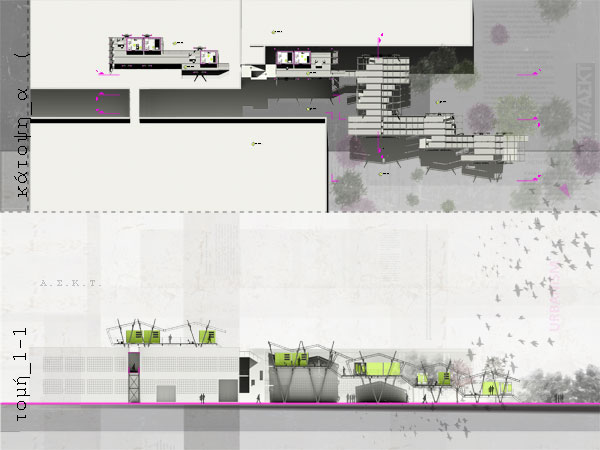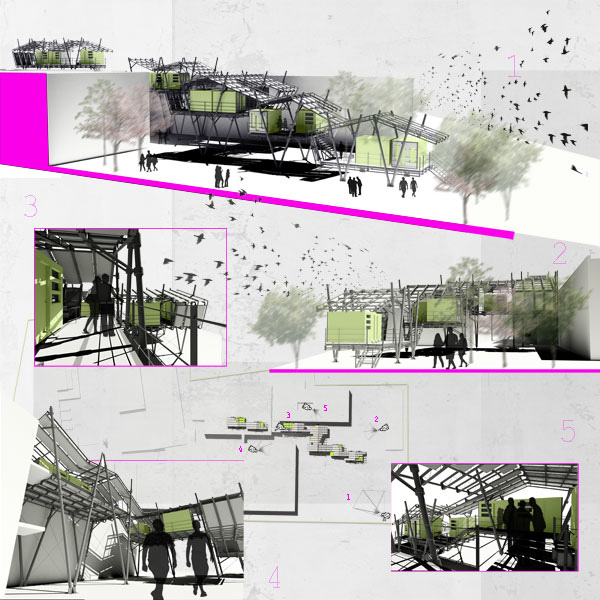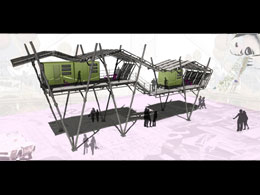STUDENTS PROJECTS
PROJECTS2012
Students: Andreou Eleni, Georgoula Konstantina, Papageorgiou Evdoxia
Supervisors: Papalexopoulos Dimitris, Gyparakis Giorgos
National technical University of Athens
Date of presentation: July 2012
Brief description: The dissertation is about a structure designed in such a way that can meet the need for housing in cases of a nomadic activity, in cases of emergency or even in cases of homelessness, etc. It is consisted of two parts that can work both combined but also independent the one from the other; a metal structure, where you can walk but also have some rest in the suitably formed, for this activity, regions and a set of units of habitation, properly designed to be the protected, interior space of living.
The human being from the very first moment of his appearance on earth, in order to be nourished, to defend himself, to survive, realized a huge number of journeys. He adopted a nomadic way of life that became the rule and was the driving force of progress throughout the years. Later, with the development of agriculture, the need for a less temporary housing was born, and the first settlements and first cities appeared. The rule becomes now an exception. What dominates is the permanent establishment in a specific place. Even then, however, whether for expansionary policy, or for trade or ideology, etc., there are many people that keep moving and making journeys, following a more "nomadic" way of life. Moreover, the ease of travelling today is really important as in a few hours you can reach a place at the other side of the world. Whether by choice or, in many cases, by necessity, man is constantly moving and does not have a specific place of stay.
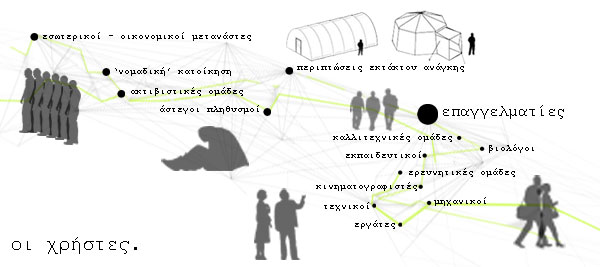
While studying this phenomenon, human mobility was decided to be the subject of our dissertation. Groups of people, who keep travelling, for various reasons, and need a temporary place to stay at their destinations, find as a solution a structure that has been erected in order to accommodate them. It is a structure consisted of many smaller parts and is striken in a short time, designed in such a way that can vary morphologically and bear habitation units, creating a "community" made up of 2 basic parts.
The original idea derives from Italo Calvino's 'Invisible Cities', and specifically from the 'thin cities', a set of graceful, filamentary, forms that make up an entire empire. The structure as a 'fine city' itself, both within a city and outside of it, comes to serve the needs of a constantly moving population, like a cloud that creates space where no other function takes place.
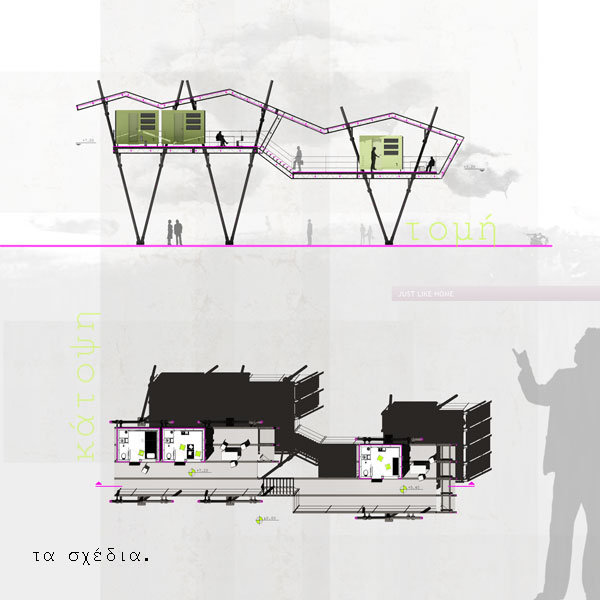
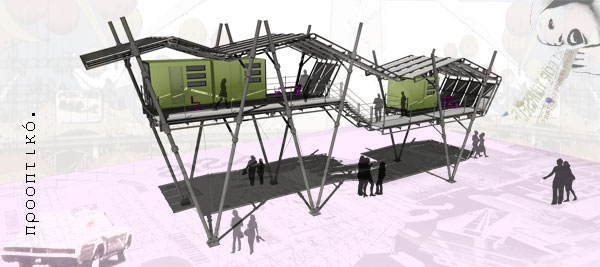
One part of the "community" consists of a metal latticed structure which is erected anywhere and adapts to any environment, thanks to the standardized and flexible construction that offers both flexibility and form.
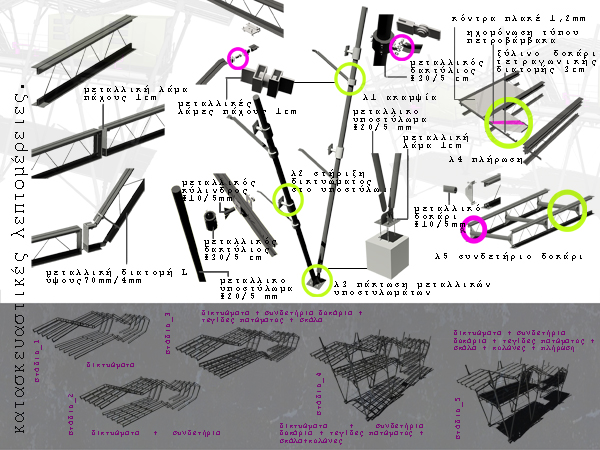
This structure is a ribbon that creates floors and roofs, in order to give birth to semi-open spaces that flow into the environment. The aim is to develop the structure at various levels, totally remote from the ground, so as not to disturb the activities carried out there, but to extend them to upper levels, so that the whole structure may be treated as an extension of public space. Right there, in this wrapping ribbon, the person can walk and many different actions can take place.
The other part of the "community" is a set of units of residence. This is the unchanging part in a generally volatile environment, which comes to serve the user's needs for temporary habitation. The dimensions of the unit are such (3.2mx 2.4m) that, from the one side, provide the minimum space of habitation required while, from the other side, urge the user to live out of it. The small dimensions of the unit and the invariance of its structure require, at the same time, a flexibility and versatility in the interior. This is achieved owing to some smart solutions that allow the appearance and disappearance of the essential furniture through a "stripping" of the walls, as they are both furniture and the interior skin of the unit. The structural solutions that have been proposed, ensure the transformation of the interior space during the day, a mutation that is based on the 3 basic functions of a day: work (8 hours), leisure (8 hours), sleep (8 hours).
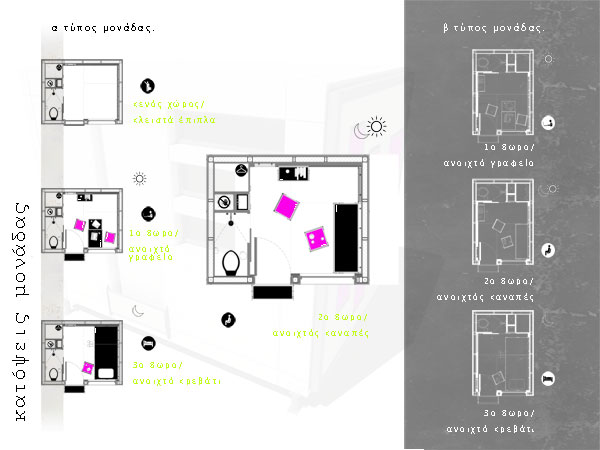
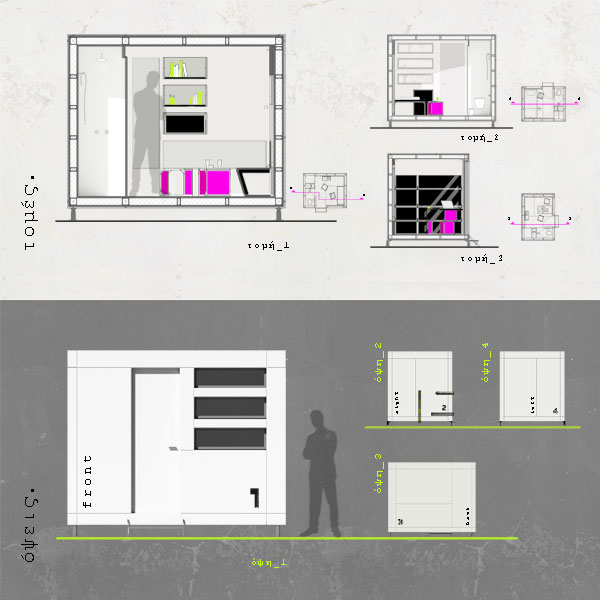
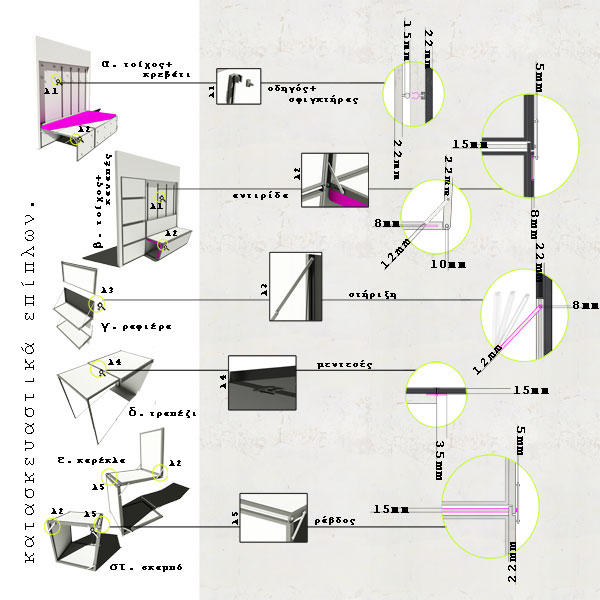
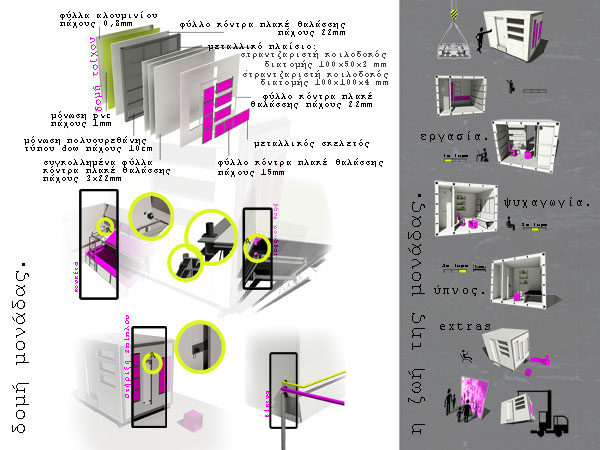
Each of these 2 parts of this "community", can be placed independently in a location. Any unit, for example, could be the house of somebody that follows a different, alternative way of life, and wants to move and stay anywhere in the world. On the other hand, the metal structure, being an extension of the public space, can accommodate activities from simple, spontaneous concentrations of people to outdoor exhibitions. Thus, we can talk about a structure, the volatility of which is not restricted in the form but also in the use, having the ability to change "identity" depending on the user.
In order to present this structure in a particular place and to understand its function, it was used as an example the School of Fine Arts, in Piraeus Street. The school often hosts a variety of activities such as workshops, symposia, exhibitions, festivals, etc., therefore, a structure as the one proposed above, could be useful. It could bear habitation units to accommodate professors and students for some time, but moreover, the units could be removed later and the structure could be used either as an exhibition hall, or as an area of outdoor work, even as a place of free action and entertainment.
